GET with it: Targeting of tail-anchored proteins via the GET system
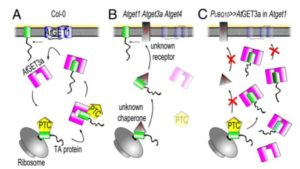 Students learn that membrane proteins are inserted into the endoplasmic-reticulum (ER) membrane co-translationally, but this mechanism does not hold for so-called tail-anchored (TA) proteins which carry a single C-terminal membrane spanning domain and insert into the ER membrane post-translationally. The mechanism of TA protein insertion was recently described in yeast as the GET (Guided Entry of Tail-anchored) system, which includes a protein complex that binds to and shields the transmembrane domain, a protein (GET3) that shuttles the protein to the ER, and ER-bound receptors that complete the insertion of the TA protein. Srivistava et al. (Plant Physiol 10.1104/pp.16.00928) recently demonstrated that in Arabidopsis the GET system is involved in the ER-membrane insertion of the TA protein SYP72. Xing et al. (Proc. Natl. Acad. Sci. USA 10.1073/pnas.1619525114) found that plants have two GET3 clades, a duplication that is also present in Lokiarchaeota (sister/precursor to eukaryotes), suggesting that rather than a plant-specific duplication, animals and fungi have lost one clade. Xing et al. also functionally characterize the genes encoding GET3 and other GET pathway components. Although get3 knock outs show only a modest root hair phenotype (suggesting an alternate route for TA protein insertion), plants are severely affected when GET3 is overexpressed in a get1 receptor mutant background, possibly due to accumulation of cytosolic aggregates of TA proteins.
Students learn that membrane proteins are inserted into the endoplasmic-reticulum (ER) membrane co-translationally, but this mechanism does not hold for so-called tail-anchored (TA) proteins which carry a single C-terminal membrane spanning domain and insert into the ER membrane post-translationally. The mechanism of TA protein insertion was recently described in yeast as the GET (Guided Entry of Tail-anchored) system, which includes a protein complex that binds to and shields the transmembrane domain, a protein (GET3) that shuttles the protein to the ER, and ER-bound receptors that complete the insertion of the TA protein. Srivistava et al. (Plant Physiol 10.1104/pp.16.00928) recently demonstrated that in Arabidopsis the GET system is involved in the ER-membrane insertion of the TA protein SYP72. Xing et al. (Proc. Natl. Acad. Sci. USA 10.1073/pnas.1619525114) found that plants have two GET3 clades, a duplication that is also present in Lokiarchaeota (sister/precursor to eukaryotes), suggesting that rather than a plant-specific duplication, animals and fungi have lost one clade. Xing et al. also functionally characterize the genes encoding GET3 and other GET pathway components. Although get3 knock outs show only a modest root hair phenotype (suggesting an alternate route for TA protein insertion), plants are severely affected when GET3 is overexpressed in a get1 receptor mutant background, possibly due to accumulation of cytosolic aggregates of TA proteins.


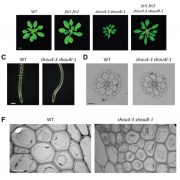
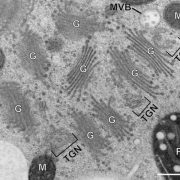
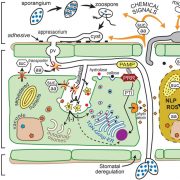
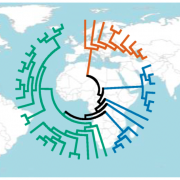
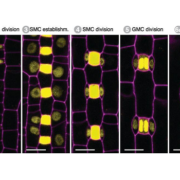


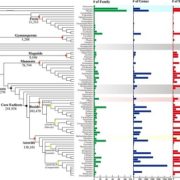


Leave a Reply
Want to join the discussion?Feel free to contribute!